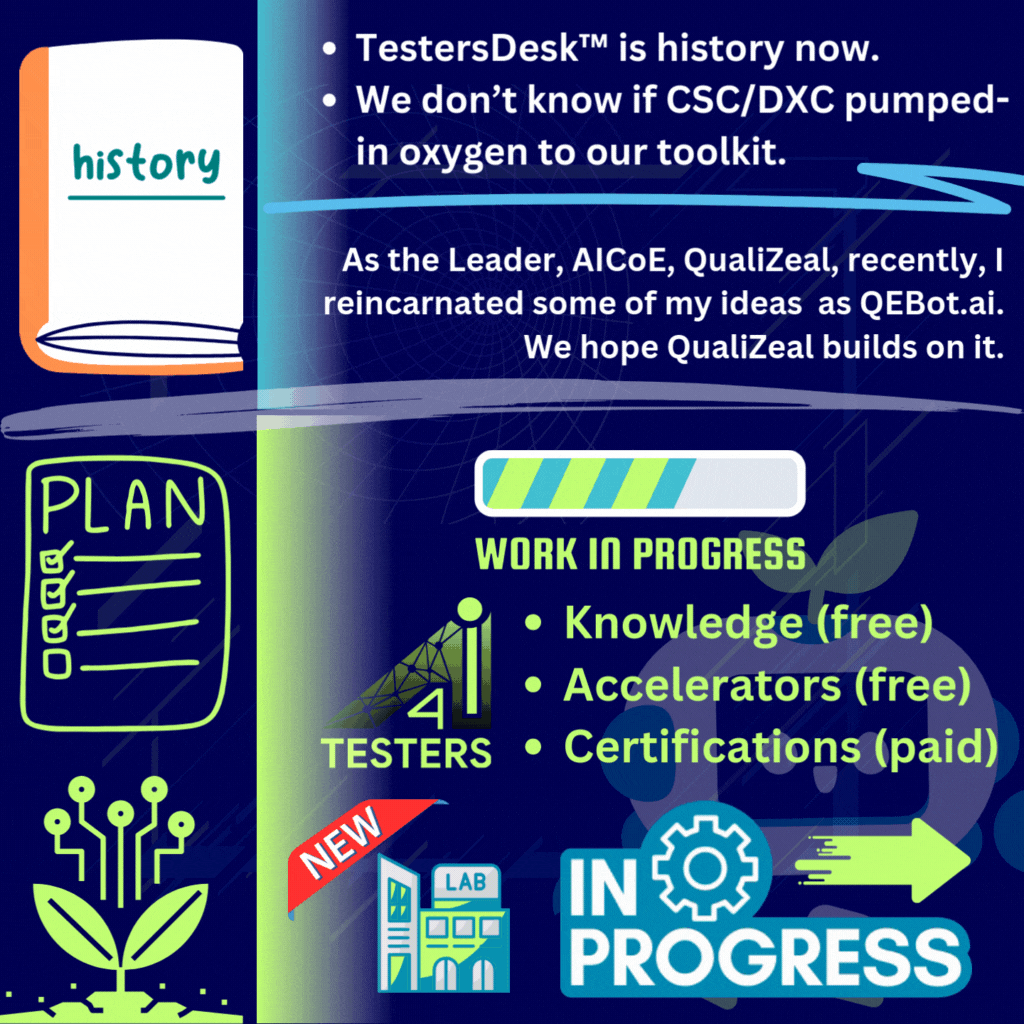A very few innovations transcend their time, leaving behind a legacy that continues to inspire. In 2006, TestersDesk™ emerged as an early pioneer of ‘intelligent’ and ‘generative’ testing tools built by ValueMinds. They leveraged ML and NLP in ways that are now obvious with the advent of Generative AI. Acquired long ago by AppLabs and integrated into the IP of a larger company, CSC/DXC, its influence endures in the foundations of today’s Quality Engineering (QE) Thoughts and Methods.
Here is a must-know story of what I understood about TestersDesk™. I know Ashwin will edit my copy way different and I am OK with it, knowing him from more than a decade. After spending a full day talking to Ashwin and writing this, I know why TestersDesk™ mattered in the world of intelligent testing tools!
– Diana
Beyond Conventional Tools - TestersDesk™ and the Generative Revolution in Intelligent Test Preparation
Every great innovation begins with an idea. For Ashwin Palaparthi, the journey started as an effort to document his vision of using “intelligent generators” for various test artifacts as a book. However, he realized that his concepts needed to be tangible and interactive to create real impact, as opposed to textual contemplations. This realization led to the birth of TestersDesk™, an online platform that automated several testing tasks, fostered creativity, coverage, value, and empowered testers worldwide.
“Sometimes, writing a input-output tool is better than wiring a book” Ashwin jokes about the platform’s inception, highlighting the leap from concepts to execution, all for the love towards testing and what we know today as QE.
No. Test Automation Tools, be it record-playback style or the over-hyped keyword-driven frameworks were not the real value-add to testing. And they will never be, as Ashwin says. No again, Test Drivers, tools or human, are not the key to Quality Engineering.
No. It was not just about Computer Aided Software Testing (CAST) either. Could this be an early form of Agentic AI thinking in Testing?
No. Not all of TestersDesk™ was available via APIs, though there were several ways to invoke its functionality from CruiseControl (an early CI/CD pipeline back then) via WSDL APIs. Somethings needed human-in-the-loop, especially on selection and prioritization of tests for a run.
No. Agentic AI never means autonomous. Human testers/QE professionals with high TQ (test-quotient) are the real agents in the chain.
Then what? Read on…
No Time? Can't Read? TL;DR? Well Look at Ashwin's Old Drawings about TestersDesk™ and Move On
Two of Ashwin’s nostalgic drawings serve as brilliant visual metaphors to articulate the journey and the very utility of TestersDesk™. A pictorial verbatim for you 🙂
Before TestersDesk.com - Handling Technical Overheads in Testing
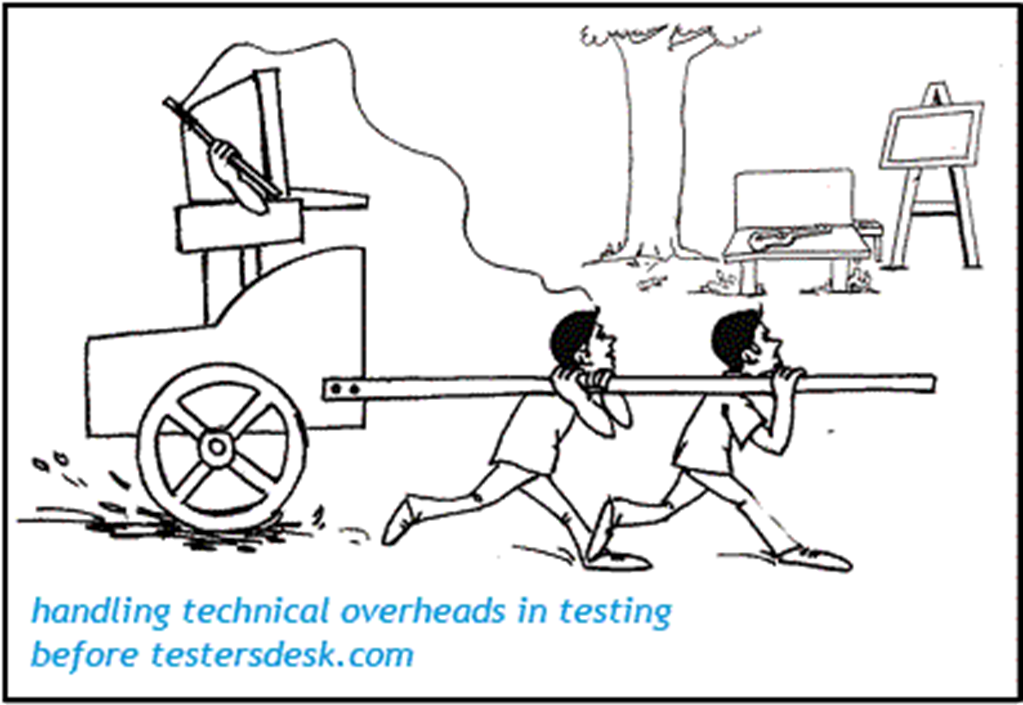
After TestersDesk.com - So Testers Can Use Their Time Better
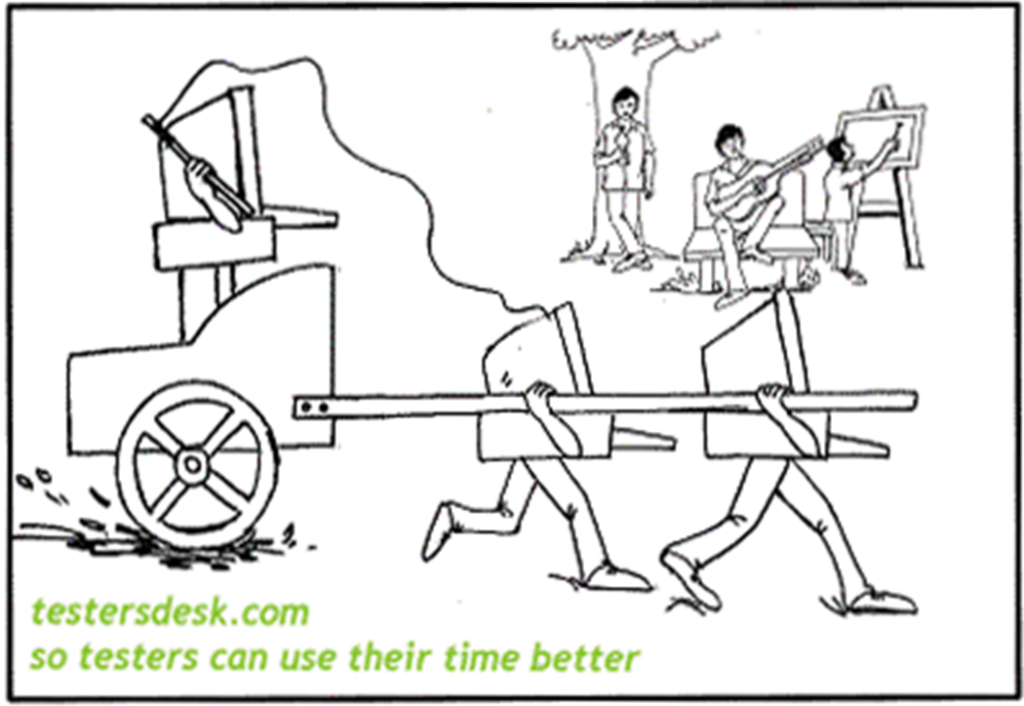
These old drawings straight from Ashwin’s diary visually encapsulate the vision of TestersDesk™’. Liberating testers from engineering tasks and enabling them to focus on what matters most – creativity, innovation, quality, and value.
For Test/Quality Engineers | Beyond Conventional Testing Tools | Generative Revolution | Intelligent Test Preparation
Note: A few of the below were freely available in public facing online toolkit (8000+ testers), a few were SaaS based via subscriptions within NetBeans IDE (500+ testers), and a few were WSDL APIs (300+ testers) exposed with licensed keys.
Smarter Test Planning and Design
- Pairwise Test Case Generator – Reduced complex and exploding test combinations, achieving maximum coverage with minimal effort– all with a finer UI and precise control over test inclusion/exclusion.
Known Usage: An early payment gateway leveraged this tool to design test scenarios for payment methods, currencies, and delivery options. Much like today’s GenAI tools, it generated optimized test cases that respected business rules while reducing thousands of scenarios to just a few dozen. - Boundary Test Case Generator (BVA++) – Automated multi-field boundary value analysis, uncovering critical edge cases by intelligently combining boundary interactions.
Known Usage: A healthcare claims processing system utilized BVA++ to design test cases for age ranges, policy limits, and dependent counts. Much like today’s GenAI-driven defect predictors, it uncovered boundary scenarios that frequently caused calculation errors during claim payouts. - T-Way Test Case Generator – Provided higher interaction coverage for mission-critical systems, scaling beyond pairwise to handle three-way and four-way interactions.
Known Usage: A marine navigation software company used this to ensure robust testing of ship control systems. It generated interaction-rich test cases, uncovering multi-layered defects caused by intricate parameter-interactions that simpler combinations often missed. - Model-Based i-Test Generator – Automatically generated i-Test (intelligent tests) covering positive and negative test cases from UML Activity Diagrams and WSDL definitions, enabling model-driven testing strategies. Its built-in ML-powered defect intelligence identified high-risk paths, ensuring test cases targeted failure-prone scenarios.
Known Usage: A validation-heavy telecom billing system relied on this to generate complex test-workflows derived from UML diagrams. And a brokering-hub leveraging SOA and exposing WSDL for wrapper-style Web Services acknowledged that 90% of the tests generated by this tool revealed failures missed by their testing team. - Data-driven Test Case Generator (for Test Automation Frameworks) – More than just a data generator, this tool revolutionized how data-driven frameworks were utilized, acting as an idea generator for designing and scaling automation tests. It enabled test automation engineers to generate structured datasets in CSV format, with each dataset representing test ideas (mutations). By pushing the boundaries of normal data-driven test automation, it reduced manual scripting efforts while driving innovative approaches to test coverage.
Known Usage: A leading financial services firm leveraged this tool to transform its loan approval automation framework. The tool generated new CSV files containing permutations of loan types, applicant credit scores, income levels, and repayment terms, derived from their base CSV. These datasets did not just drive the automation framework– they reshaped the test strategy itself, enabling engineers to target edge cases, enhance modularity, and significantly boost defect detection rates.
Comprehensive Test Data Generation
- Language String Generator – Produced multilingual input data, ensuring applications supported a global audience.
Known Usage: An early global e-learning platform tested its quiz module with Unicode-based input in multiple languages, including Japanese and Arabic. The generated test data revealed rendering issues in Arabic content that would otherwise go unnoticed. - Quantified String Generator – Generated self-descriptive strings for boundary testing, simplifying debugging by embedding positional markers.
Known Usage: A financial app used these strings to identify truncation issues in fields like account names and transaction comments. The positional markers in generated test data instantly highlighted defects in field validation logic during unit tests, serving as a precursor to today’s widely adopted shift-left testing practices in QE. - Fault Fuzzer – Simulated unexpected or invalid inputs for fuzz-testing scenarios, from SQL queries and random strings to command-injected payloads.
Known Usage: A cybersecurity firm tested API resilience using Fault Fuzzer, “revealing unhandled exceptions triggered by randomized or adversarial payloads– much like how modern tools test API endpoints with adversarial data. - Template-Based File Generator – Automated creation of structured input files for scenarios requiring massive datasets.
Known Usage: A logistics company generated hundreds of XML files for integration tests with partner systems across their routing workflows. Leveraged ML-enhanced defect intelligence to generate test data that flagged schema-level mismatches overlooked by conventional functional/business-logic tests.
Tackling Security and Edge Cases
- SQL & Cross-site Scripting Injection Test Generator – Simplified security testing by automatically crafting injection payloads to expose vulnerabilities in SQL logic and Session Management (regenerating input functional tests with a different purpose).
Known Usage: An online event-booking system used this tool to simulate attacks on its reservation fields during peak testing ahead of a high-profile 2007 New Year’s Eve event. It designed test cases that uncovered critical SQL injection vulnerabilities as well as browser-level session-hijacking, ensuring robust security; a memorable milestone for team TestersDesk™. - Luhn (Mod-10) Number Generator – Created valid and invalid credit card numbers to validate financial systems’ input handling. Though it was named Luhn, it did cover pre-dating expiry dates and so on.
Known Usage: A payment processor generated thousands of valid and invalid card numbers and associated details for transaction verification tests. The generated data improved fraud detection algorithms by simulating edge cases at each layer in their multi-tier architecture systems. Back then, many web applications used to complete transactions and pass additional checks and processing to the backend to keep customers (perhaps even a few opportunistic hackers😊) happy! - Test Case Permutations Generator – Explored sequences of critical actions, uncovering defects in process flows and state management.
Known Usage: A banking app revealed data conflicts when actions like balance checks, fund transfers, and password updates were tested in varying orders. The tool’s permutations ensured comprehensive process coverage. This was a favorite tool for testers who used to get a new order from this tool to catch defects that otherwise do not surface in the happy paths. This tool revealed how changing the order of tests, though logically sensible, could lead to unexpected behavior.
Bridging System-Level Complexity
- State-Modification Generator – Enabled dynamic generators of OS configurations, simulating user environments and stress conditions– ML-model backed and Stochastic (random) ones. Each generated state was a far right-shifted test designed to surface far-left bugs, emphasizing the power of exploratory testing in identifying critical flaws early.
Known Usage: An embedded-system manufacturer tested device compatibility across operating states like power-saving modes and network reconnects. The generated test cases exposing missing transitions that challenged the original state-transition diagrams in their specifications. Information Dump Generator – Generated configurable-scripts to collect specific runtime system data for debugging during test execution. An early case of Test Result Analysis, though only for OS-centric issues.
Known Usage: A gaming company used this tool to analyze memory and CPU usage during multiplayer tests. Generated focused system logs that helped isolate performance bottlenecks during high-load multiplayer scenarios.
- Environment/Network Disturbance Generators – Simulated outages and instability, testing how systems handled failures and recovery scenarios. It was a generative fault-injection tool specifically designed to simulate and categorize failures at the OS-level (Windows and Linux).
Known Usage: An enterprise email provider tested failover mechanisms during network disruptions, identifying recovery bottlenecks that affected geographically distributed servers.
Industry Recognition & Achievements - A Trailblazer’s Journey
TestersDesk™ was widely celebrated for its innovative and pioneering approach to testing.
Over the years, it garnered multiple accolades and was recognized as a game-changer in the testing domain.
Public facing online toolkit – 8000+ Test Engineers
SaaS access via subscriptions within NetBeans IDE – 500+ Test Engineers
WSDL APIs exposed with licensed keys – 300+ Test Engineers
Notable Awards
- Best Innovation of the Year, HYSEA (2007) – Certified by Ernst & Young and awarded by the Hyderabad Software Enterprises Association, a renowned body driving innovation in India’s IT ecosystem.
- Testing Thought Leadership Award, Test2008 forum – Acknowledged as a beacon of thought leadership in the global testing domain.
- TATA NEN Hottest Startups Recognition (2009) – Presented by TATA, one of India’s most iconic business houses, and NEN (National Entrepreneurship Network), positioning TestersDesk™ among India’s most promising startups.
- Finalist at the 18th Annual ITsAP Software Products Awards (2010) – Cementing its place as a leading innovator in software product development.
(Media links, references, acknowledgments, and pics in the end)
The real award was/is/will-be the fact that select companies reflect our very core name “ValueMinds” in theirs, ways 360°, such as “Moolya” (मूल्य (mūlya), Value in Sanskrit), originally/incidentally/translatingly/whateverly.
“Value Assurance”, what I call Testing or QA/QE as, will remain in my DNA– reentry into QE or my Music is obvious. I don’t need you to love me or hate me; for I have had both in abundance. Tell me the “value” you deliver or want from me.
Ashwin Palaparthi
Bridge
The innovative features pioneered by TestersDesk™ laid the groundwork for today’s AI-driven testing tools. Concepts like intelligent test design, contextual test data generation, and dynamic combinations for comprehensive ML-driven coverage reflect how it was ahead of its time.
Now, as we embrace AI Agents and Agentic AI beyond GenAI, the vision expands to a future where:
• Test Agents that autonomously qualify CI/CD pipelines with inherent tests from User Stories and Sprint Goals.
• Autonomous Testing, Quality Gates, MLOps, and Data Science on Test Logs shall dynamically accomplish Quality Objectives.
• Shift Anywhere Testing Paradigms— left, early, right, late, or continuously.
5 Takeaways for QE Innovators in 2025 and Beyond
1. Leverage Generative AI for Smarter Test Design and Execution
TestersDesk™ pioneered generative tools that created comprehensive test cases efficiently. Today, QE teams can extend this legacy by integrating Generative AI (GenAI) to design, optimize, and execute intelligent tests. By automating test scenario generation and reducing manual interventions, organizations can shift focus to creative problem-solving and exploratory testing-- a cornerstone of Agentic AI's collaborative potential.
2. Adopt Agentic AI for Autonomous Quality Orchestration
The future of QE lies in the automation of orchestration itself. AI Agents, inspired by the generative capabilities of TestersDesk™, can autonomously manage CI/CD pipelines, optimize test environments, and execute shift-anywhere testing. Imagine agents that decide which tests to prioritize, adapt coverage dynamically based on runtime risks, and maintain quality gates without human oversight. These Agentic AI-driven workflows can radically boost efficiency and quality outcomes.
3. Foster Human-AI Collaboration for Creative Quality Engineering
TestersDesk™ balanced automation with human insight, empowering testers to focus on innovation. Agentic AI offers an advanced form of collaboration, where intelligent agents work alongside human QE professionals as trusted co-pilots. These agents can analyze complex datasets, suggest test optimizations, and even simulate end-user behaviors, freeing testers to tackle high-value, exploratory tasks that require creativity and intuition.
4. Create User-Centric Testing with Context-Aware AI Agents
Just as TestersDesk™ tools excelled at understanding contextual nuances, AI Agents can take user-centric testing to the next level. These agents can simulate real-world user environments, personalize test scenarios based on user profiles, and adapt dynamically to feedback loops. This ensures that software not only meets functional requirements but also delivers exceptional user experiences, reducing the gap between product teams and end-users.
5. Champion Continuous Learning and Evolution in the Age of Agentic AI
The evolution from TestersDesk™ to GenAI and Agentic AI underscores the critical need for QE professionals to upskill continuously. As AI Agents take over routine tasks, QE professionals must focus on mastering next-gen tools, interpreting AI-driven insights, and designing frameworks where human intuition and AI intelligence converge. This symbiotic relationship between humans and AI will be the hallmark of future-ready quality engineering.
TestersDesk™ planted the seeds of today’s GenAI-powered QE evolution, showcasing how visionary ideas can ignite industry revolutions and shape the future of testing.
“If Agentic AI existed back then, we might have just called it Ashwin working overtime!”
In September 2010, TestersDesk™ and its parent company, ValueMinds, were acquired by AppLabs (founded by Sashi Reddi, with backing from Sequoia Capital) for close to a $million dollars$ – about an year before AppLabs itself was acquired by CSC, which later became DXC Technology.
Following the acquisition, Ashwin rejoined AppLabs as Vice President, Innovation, where he led groundbreaking projects with a team of 50 dedicated engineers, including:
- AppCloud – A pioneering Cloud-based Performance Testing Platform.
- eTAP (Enterprise Test Automation Platform) – An enterprise-grade automation suite.
- A revamped Test Harness for FIX Protocol-Based Applications, relied on by Wall Street financial systems.
- AppSim – A simulator enabling seamless shift-left integration testing for SOA/WebServices-based applications.
- Several patent-pending testing tools designed to generate various test artifacts.
From conceptualizing transformative tools to building platforms that pushed the boundaries of testing, TestersDesk™ left a lasting mark on the testing ecosystem, laying the foundation for the advanced QE practices we see today.
And as they say– the rest is history.
Oh, but history does repeat itself.
#AshwinZindaHai
Links | Media | Community | TestersDesk™; As The World Saw It
- “Testing Firm AppLabs Buys ValueMinds” by VCCircle at https://www.vccircle.com/testing-firm-applabs-buys-valueminds
- “AppLabs buys ValueMinds” by TheHindu at https://www.thehindu.com/business/companies/AppLabs-buys-ValueMinds/article16136526.ece
- “AppLabs acquires ValueMinds” by TheIndianEXPRESS at https://indianexpress.com/article/news-archive/web/applabs-acquires-valueminds/ and https://www.newindianexpress.com/business/2011/Sep/15/csc-acquires-applabs-291081.html
- “AppLabs Acquires ValueMinds” by ProQuest at https://www.proquest.com/docview/749580039?sourcetype=Trade%20Journals
- ValueMinds Solution, Acquired/Merged by PitchBook at https://pitchbook.com/profiles/company/51200-20#overview
- “Online testing platform for software testers” by Economic Times at https://economictimes.indiatimes.com/microsoft-says-yahoo/online-testing-platform-for-software-testers-released/articleshow/2757791.cms?from=mdr
- “Generating test data made easy” by CiOL at https://www.ciol.com/generating-test-easy/
- Again, “Generating Test Data Made Easy” by PCQuest at https://www.pcquest.com/generating-test-data-made-easy/
- “TestersDesk.com bags ‘Best Innovation’ award” by OneIndia at https://www.oneindia.com/2008/02/26/testersdeskcom-bags-best-innovation-award-1204015163.html
- TestersDesk mentioned by #TestRail for Pairwise Testing at https://www.testrail.com/blog/pairwise-testing/
- TestersDesk mentioned by #Moolya for Pairwise Testing at https://moolya.com/blog/testing-stories/how-rapid-software-testing-lessons-helped-us-to-help-our-client/
- Data Driven Example with TestersDesk covered by Test Automation Tool #Sahi at https://community.sahipro.com/forums/discussion/1123/sahi-data-driven-example-with-testersdesk
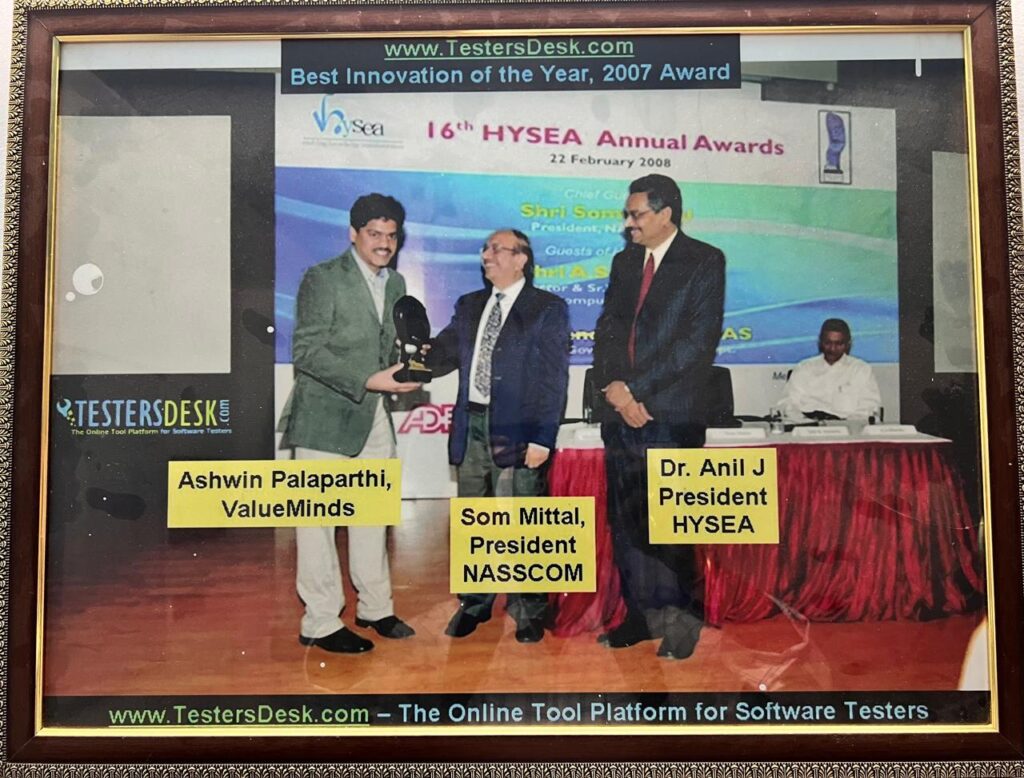
Best Innovation of the Year Award from HYSEA, presented by Som Mittal, President NASSCOM and Dr. Anil, President, HYSEA.
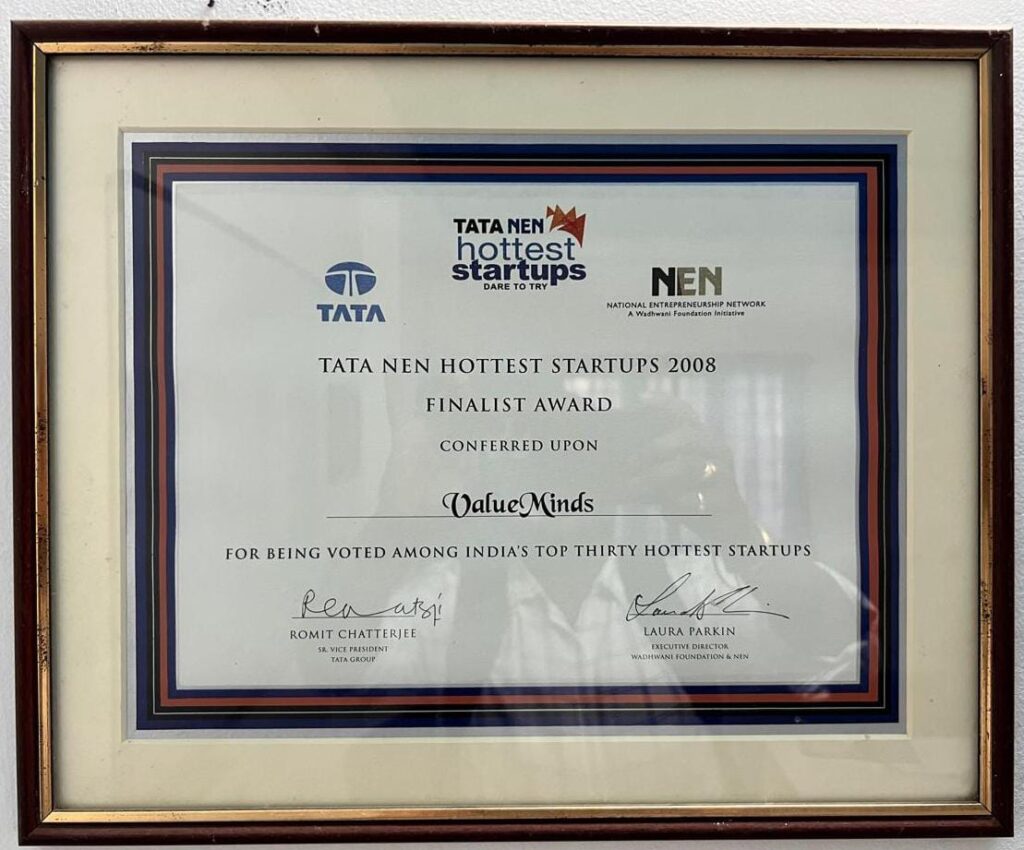
Hottest Startup Finalist, presented by TATA and NEN, Hotel Taj, Mumbai
Pic from Ashwin’s home-office wall – Credits @Kishore Grandhi
the NEXT
